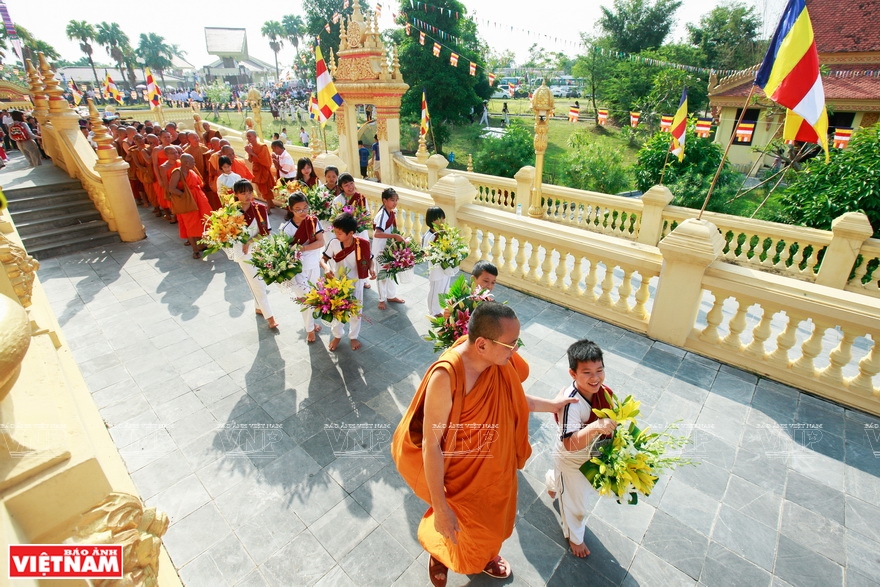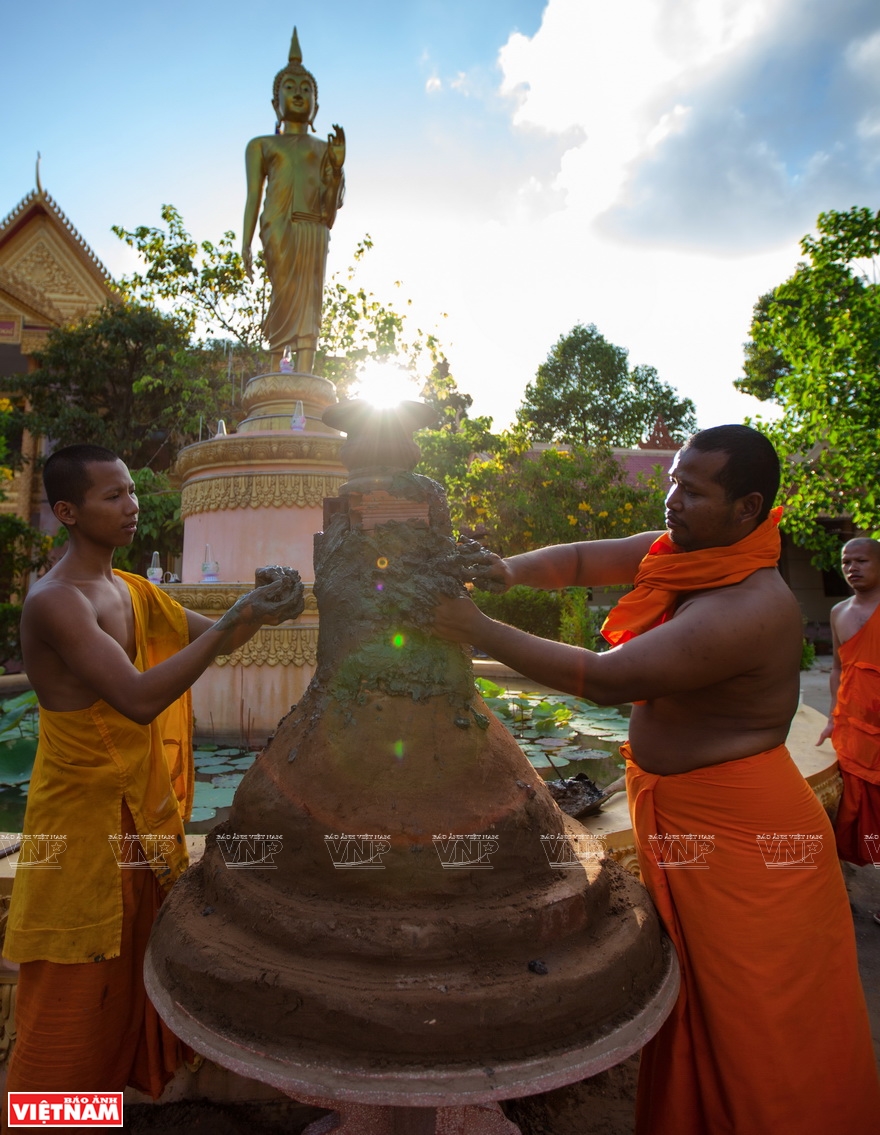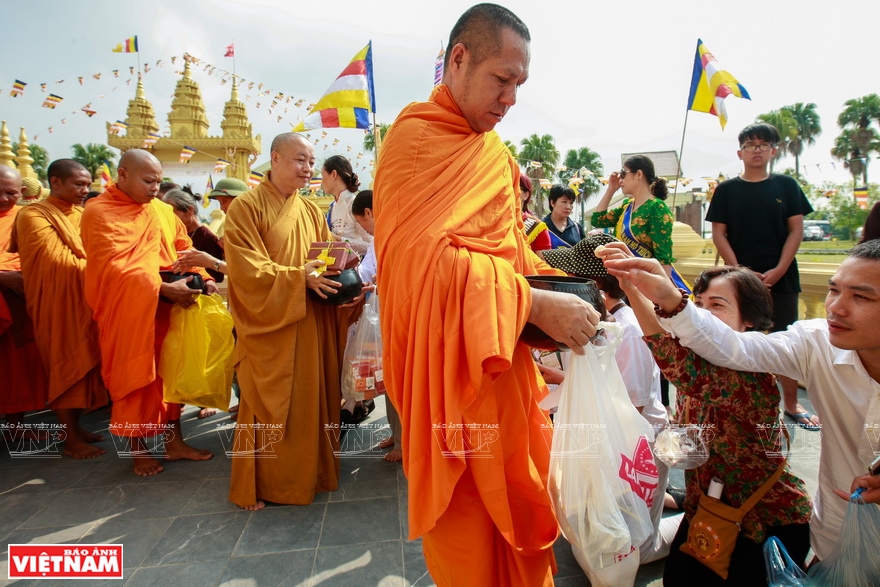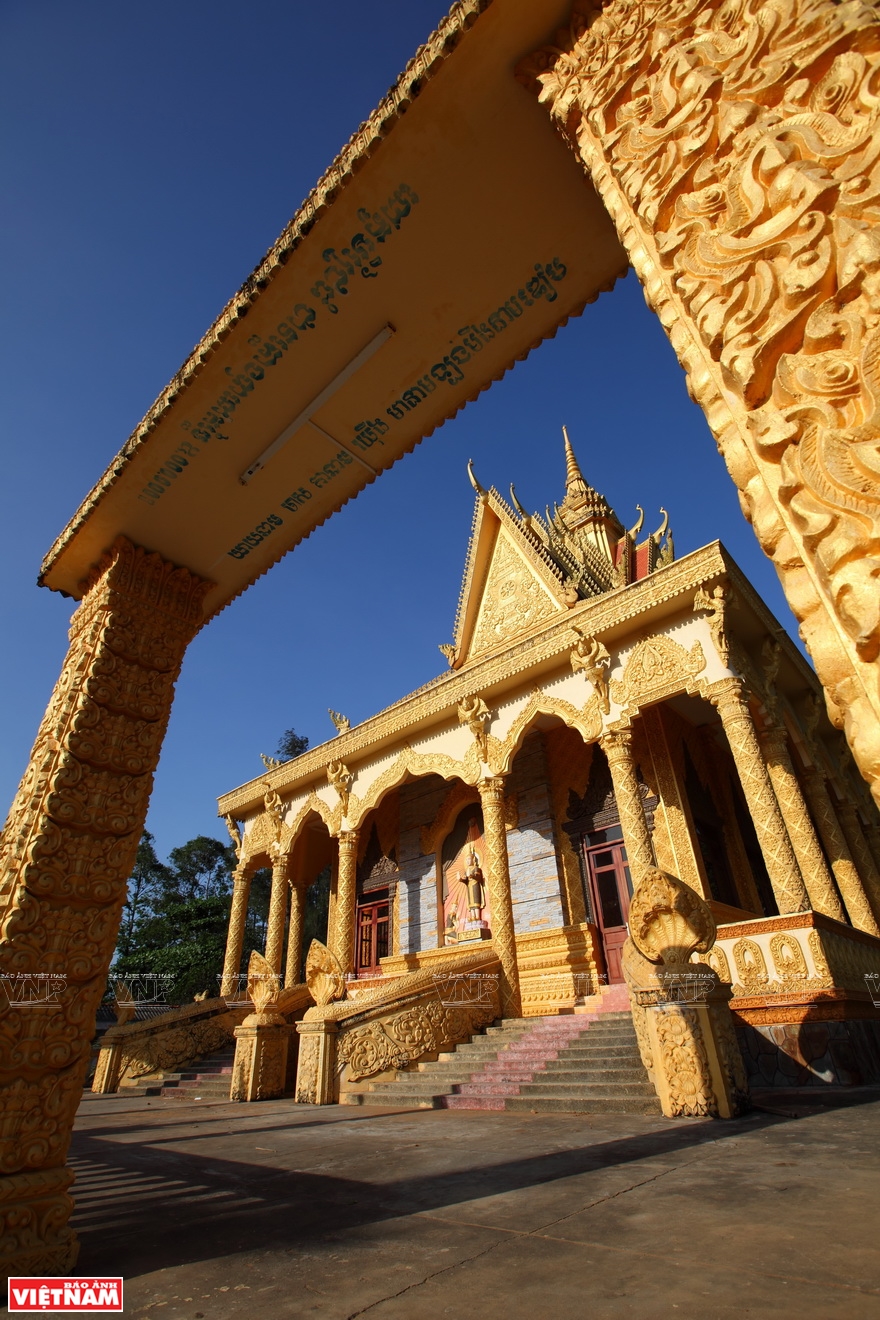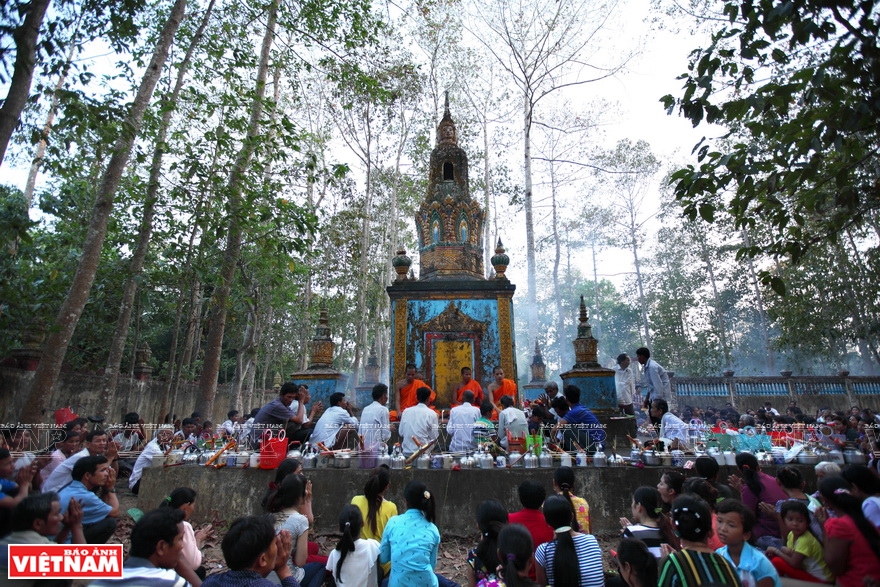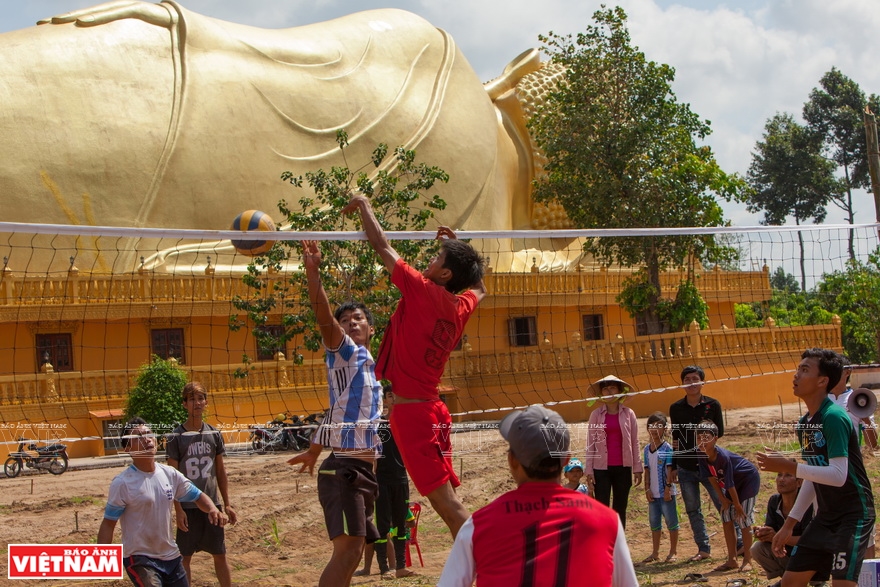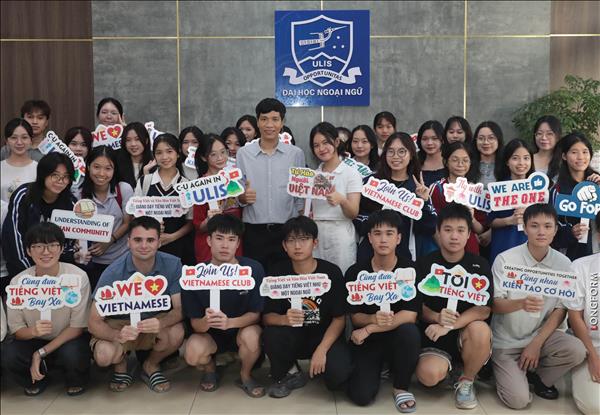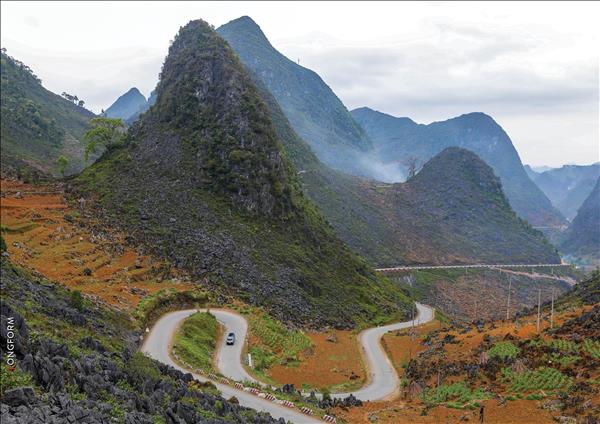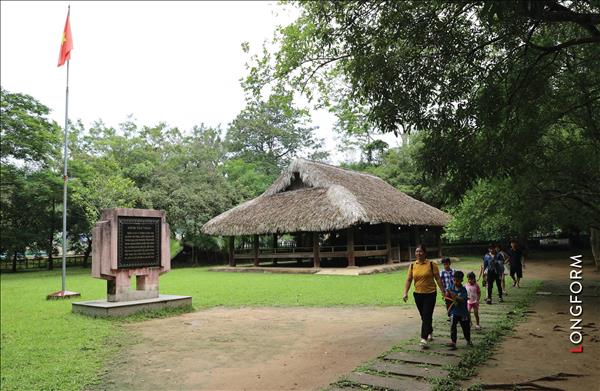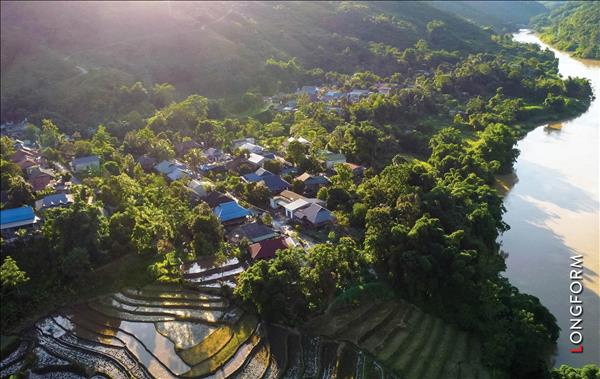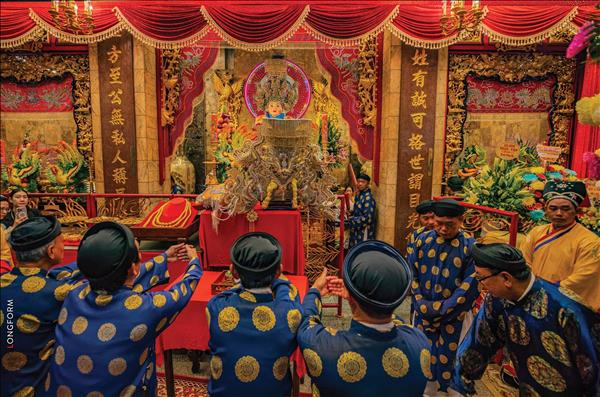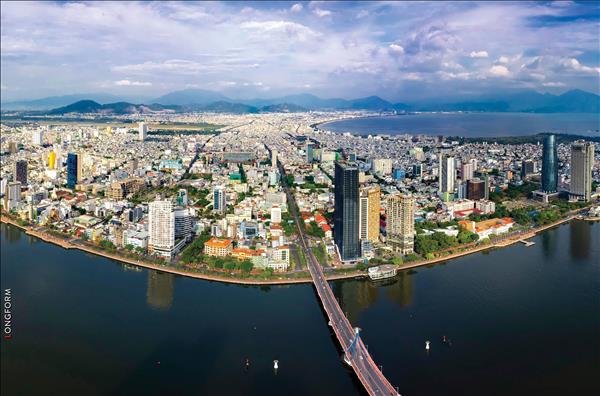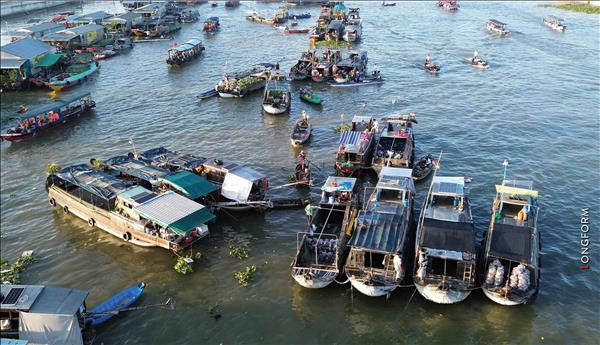We went to Tra Vinh province to attend the wedding of a Khmer friend, Thach Ri Con. The groom and bride were given blessings and teachings on marital faithfulness and filial duty by Buddhist monks. This is an indispensable formality in a Khmer wedding.
Thach Ut, the wedding master, told us that Buddhist monks, who receive high respect in the Khmer community, consider educating younger generations as their responsibility.
|
According to Khmer customs and belief, a person receives blessings from Buddhist monks when they are born and grow up, and meet Buddha after his/her death. So, the life of any Khmer person is attached to a pagoda, which is a sacred space connecting every person and family in the Khmer community.
|
Offering food and fruit to Buddhist monks is a common practice in Khmer society, and is a beautiful cultural trait of the ethnic group. It reflects the philosophy of Buddhism which promotes a humane lifestyle.
|
. The groom’s family makes a meal to offer to their ancestors to inform them of the son’s marriage. Photo: Thong Hai The formality of tying thread to the wrists of the bride and groom symbolizes the marital ties. Photo: Nguyen Luan Thach Ri Con escorts his bride home. Photo: Nguyen Luan Head monk of Xoai Xiem pagoda Thach Nhut gives blessings to the couple in the wedding. Photo: Thong Hai 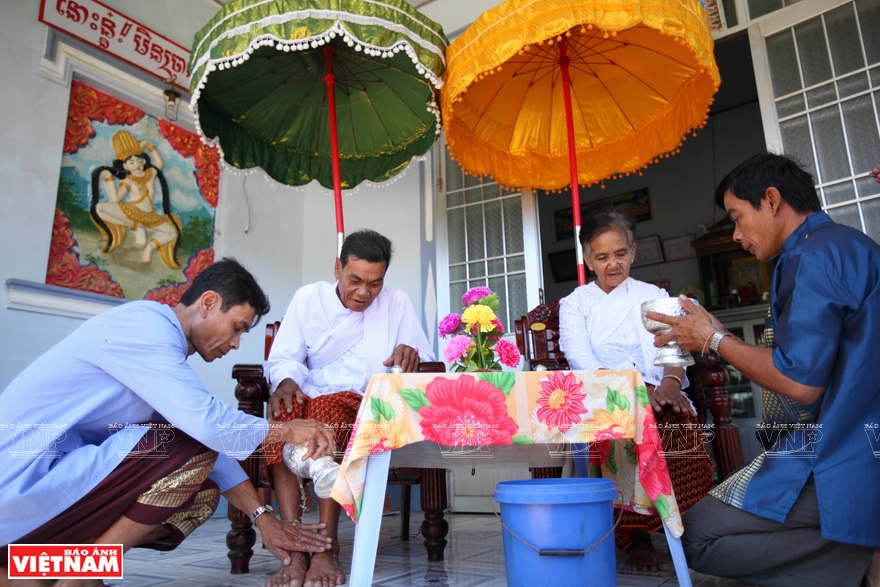
Chol Chnam Thmay festival includes a formality in which the son of the family takes water
from the local pagoda’s well to wash his parents’ and grandparents’ feet to show his respect for them. Photo: Nguyen Luan 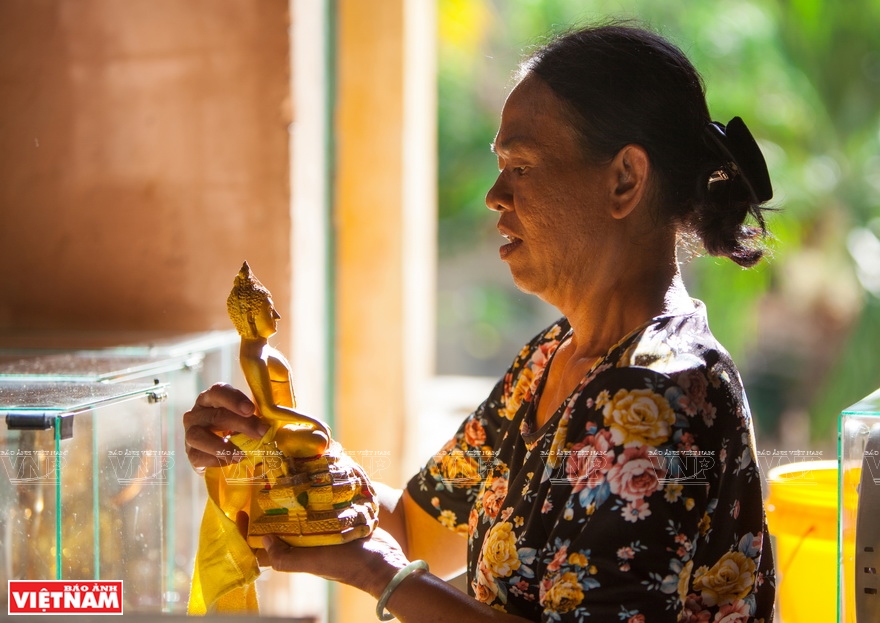
Preparing for the Chol Chnam Thmay festival: Cleaning a Buddhist statue. Photo: Nguyen Luan
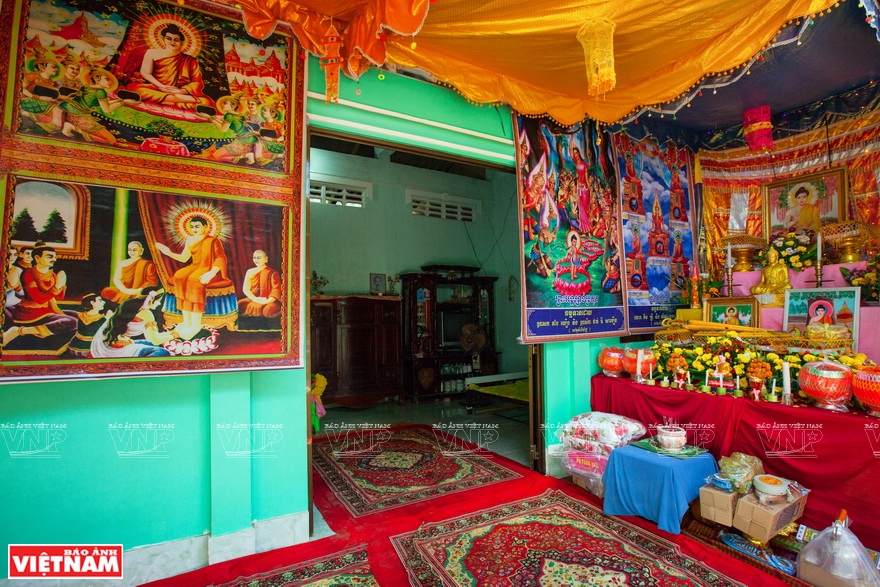 The altar dedicated to Buddha is beautifully decorated during the Chol Chnam Thmay festival. Photo: Nguyen Luan 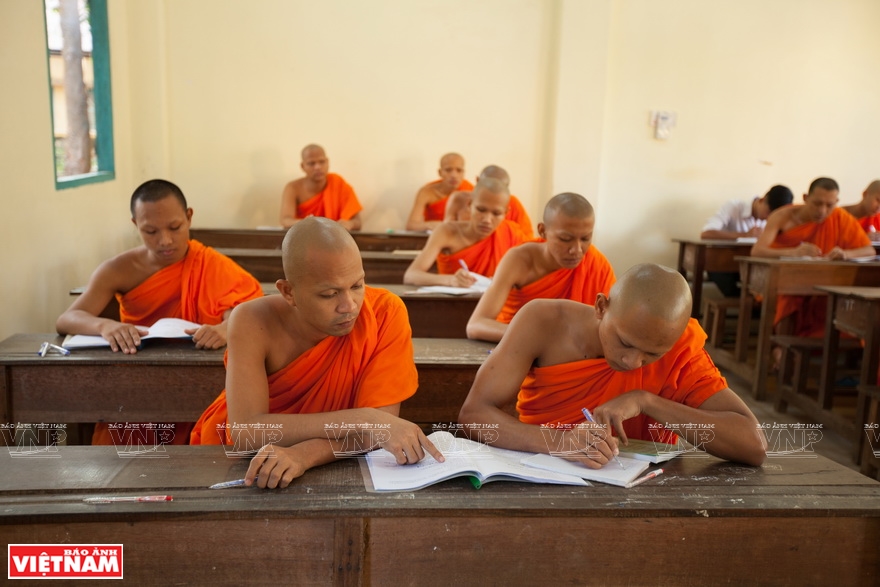 Buddhist students learn the Khmer language at Pali intermediate school in Tra Vinh province. Photo: Nguyen Luan Khmer people attend a sermon at the pagoda. Photo: VNP Files |
After the wedding, we followed Thach Ut to visit a pagoda close to the groom’s home. The pagoda has architecture typical of the Khmer. Its entrance gate and surrounding walls are decorated with stylized art patterns related to the tales of Buddha. The pagoda has towers which are built by families for keeping the ashes of their dead family members.
According to Khmer customs and belief, a person receives blessings from Buddhist monks when they are born and grow up, and meet Buddha after his/her death. So, a pagoda is the best place for a dead person to rest.
At the age of 12, a Khmer boy must live and study in a pagoda as a Buddhist follower for a certain period (depending on his family’s conditions) before he becomes a grown-up. During the boy’s stay at a pagoda, which is also a way to show gratitude to his parents, he is taught Buddhist philosophy and knowledge as well as proper manners. After his stay at the pagoda, the boy can choose to become a monk or return home.
That’s why, the life of any Khmer person is attached to a pagoda, which is a sacred space connecting every person and family in the Khmer community. Khmer people always think of the pagoda in their native village, which reminds them that they should contribute to living good lives wherever they go, Thach Ut told us.
Buddhism-related festivals
Khmer festivals and ceremonies are all related to Buddhism, which show the living philosophy of this religion.
|
For the Khmer in southern Vietnam, a pagoda is not only a religious establishment, but also a cultural and social center and a common home of Khmer people.
Buddhist Sangha of Vietnam
|
During Chol Chnam Thmay, families prepare offerings to their ancestors at home and in pagodas and bathe their elderly grandparents and parents.
Weeks before Chol Chnam Thmay, the Khmer contribute money and labor to renovate the pagoda in the village where they live.
The pagoda is where they hold all important ceremonies of Chol Chnam Thmay during the three-day festival. The only ritual held at home is the offering to ancestors on New Year’s Eve.
|
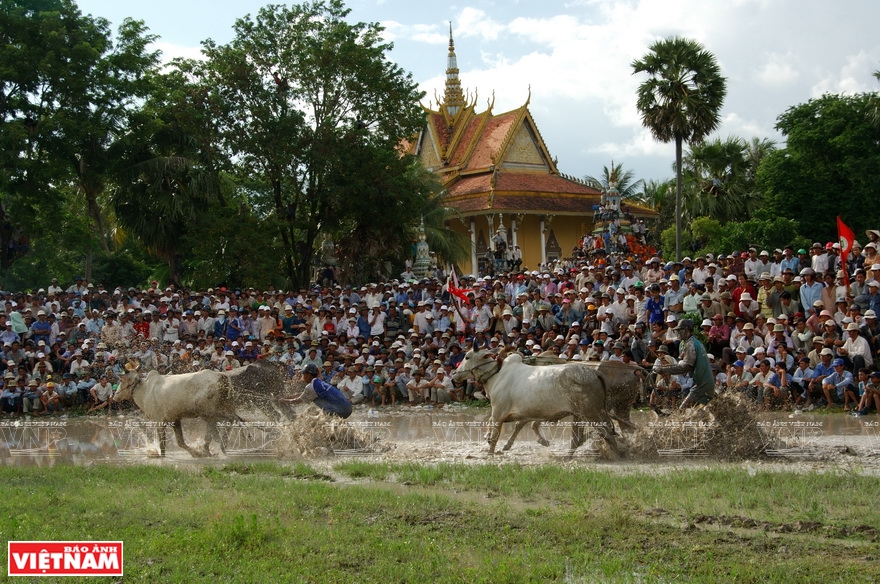 Bay Nui cow racing, a Khmer festival featuring the racing of cows of a breed originating from Bay Nui area in An Giang province. Photo: VNP Files. |
On the first day of Chol Chnam Thmay, people attend a ceremony at the village’s pagoda to recite Buddhist prayers to welcome the new year and pray for peace and happiness for the community.
On the second day is a ceremony in which Buddhist followers offer food to monks and build hills of sand. During this ceremony, monks recite prayers to pray for peace for the spirits of the dead and happiness for the living.
On the last day is a ceremony to bathe Buddha statues and monks.
During Chol Chnam Thmay, beautifully decorated pagodas are crowded with people in colorful costumes bringing offerings to Buddha and their ancestors whose ashes are kept in pagodas. The offerings to the ancestors include a pair of banh tet (round sticky rice cake with pork and green bean filling), fruit and white cloth.
After these three ceremonies at the pagoda, Khmer families hold a ritual to bathe Buddhist statues at home and offer food and fruit to their ancestors on the family altars.
The second important ceremony of the Khmer is Xen Don ta which is held from August 29 to September 1 at home and at pagodas to make offerings to their ancestors.
The last one is Ok Om Bok held in the middle of the tenth lunar month to worship the moon and pray for bumper crops. During Ok Om Bok, the Khmer fly lanterns, float lit banana tree rafts and organize boat races for entertainment and in praying for favorable weather and good harvests
|
There are more than 600 Khmer pagodas in southern Vietnam with over 10,000 monks. Many of these pagodas are centuries old and are recognized a national cultural or architectural relic, including Ang, Met, Hang and Doi pagodas. Buddhist Sangha of Vietnam |

